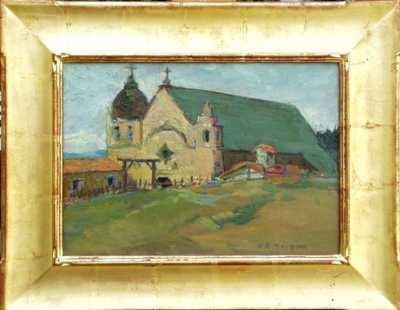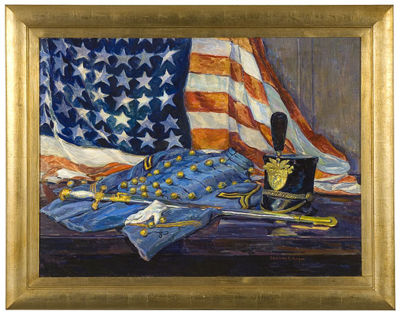

Son of: Augustus 1783
From The Frontier Guardian, Kanesville (later Council Bluff, Iowa) June 13 1849:
"John B. Crowell, A. B. Crowell, C. A. Bodwell, and William Bell from Hartford Conn. Arrived at this place four weeks since. They are bound for Salt Lake City in company with Messers Kinkade and Livingston. Noah Norton, Adrian, Michigan; Abraham Mills, (ditto), Mr. White (ditto)... are attached to the Mormon train to go by way of Salt Lake to the gold regions.
From History of Sonoma County (California), p.408:
The life of the pioneer settler, filled with unusual and often thrilling experiences, will ever form interesting reading to those generations which follow him and who unconsciously accept as commonplaces the privileges and luxuries of a civilization that but for him would have been unknown. Among the hard up builders of this commonwealth mention belongs to Charles A. Bodwell, who throughout his life has dipicted those sterling and persevering traits of character which have come to him as a heritage from a long line of New England ancestors. He was born in Farmington township, Hartford county, Conn., November 24, 1822, one of the four children born to his parents, Augustus and Olive Williams (Buck) Bodwell, the former a native of Simsbury and the latter of Farmington township, Hartford county, Conn. On the paternal sided his grandmother Mary (Mather) Bodwell, came of old Plymouth Rock ancestry, and during her girlhood she made her home with an uncle, Colonel Willis, upon whose land grew the Charter Oak, so notable in the history of this country. The parents passed their entire lives in Connecticut, the father passing away at the age of eighty-four and the death of the mother occurring Jan 12, 1839.
Charles A. Bodwell was reared on the home farm, and the education which he received in the district schools was supplemented by a course in Farmington Academy. With the close of his school days he determined to carry out a plan which had been forming in his mind for some time, which was to take up the study of drugs, and in pursuit of this idea he went to Harford, Conn., and entered the drug store of Lee and Butler, well known in the wholesale and retail drug trade. Ultimately the business was purchased by his brother, Woodbridge Bodwell, who after three years sold the business to another brother, George Bodwell. Charles A. Bodwell continued in the employ of his brother until March, 1849, when he went to St. Louis, Mo., where he joined a party bound for Salt Lake City, under the management of Livingston & Kinkead. The stock of merchandise which they brought with them was the first general assortment of this line that was ever opened up in Salt Lake. From Omaha the party traveled in company with a Mormon train of one hundred wagons for freighting the goods, and after being six months on the way, finally reached their destination. By this time the Mormons were in sad need of supplies, having nothing except what they brought with them when the territory was opened in 1847. The owners of the stock persuaded Mr. Bodwell to remain in their employ and the following spring he and Mr. Livingston returned east for more goods to replenish their stock. The trip east was made in an army ambulance with $20,000 in gold dust under the seat. The Pawnees tried to stampede them at Oak Grove, but Mr. Bodwell drew a revolver and a moment of hesitation on the part of the Indians gave him the mastery of the situation. Mr. Livingston;s duty was the purchasing of the goods, while Mr. Bodwell selected and purchase the cattle for the train. The latter were taken from Independence, Mo., to Table Creek, at old Fort Kearney, whither Livingston had brought the merchandise by steamer. At this point the wagon train was made up and put in charge of Trainmaster A. O. Smoot, prominent in Mormon circles and probably the father of Senator Smoot. The leaders of the enterprise preceded the wagon-train and reached Salt Lake City in twenty-four days. Mr. Bodwell remained in Salt Lake City until the spring of 1851, when he went to Fort Hall, from there he went to Thomas Fork, Idaho, east of Soda Springs, and close to the Utah line. There he built a toll-bridge over the Thomas fork, a branch of Bear river, by means of which e hoped to reap an income from the immigrants who where then going westward. Travel that year, however, proved exceptionally light, and after conducting the business for about a year, he gave it up. A better fortune awaited his successors, for the follwing year they made about $15,000 on the toll of immigrants.
From Thomas fork Mr. Bodwell went to Kansas, settling at a trading post on Grasshopper creek, on the Santa Fe trail, one mile south of Grasshopper Falls, now Valley Falls, Kansas and about fourty miles from Leavenworth. During the year that he remained there he carried on a trading business with the Indians, after which he came to California with a heard of cattle belonging to Young and Ross. After he had been in the state about a year, the cattle in the meantime becoming marketable, he removed to San Francisco and siposed of his stock, after which he established himself in the hay and grain business. His identification with Sonoma dates from the fall of 1856, at which time he purchased four hundred and eighty-five acres of land in partnership with his brother-in-law, J. B. Lewis. Mr Bodwell made his mone on the land until 1864, when he sold his interest to the present owner and with the proceeds purchased the home in which he now resides at Lakeville, Vallejo township. Here his property consists of two hundred and fifty-five acres of excellent farming land, which he devotes to general farming and stock-raising. In 1879, he built what is known as Bodwell Landing, which is a wharf for steamers and vessels which ply Petaluma creek.
In his marriage, which occurred in 1864, Mr. Bodwell was united with a native New Englander in Miss Charlotte Frances Chadbourne, who was born in Baldwin, Me., October 17, 1836, and who came to California with her brother in the fall of 1861.
Politically, Mr. Bodwell has always espoused Republican principles. Always interested in measures for the public good, he is ever found in the forefront of project which tend to upbuild the community in which he lives. During the year 1856, he was a member of the vigilance committee, at the time James King was killed by James P. Casey, and he took an active part in establishing law and order in the city. On May 5, 1875, Mr. Bodwell was appointed postmaster of Lakeville, a position which he has since filled with efficiency. Although nearing the ninetieth milestone in life's journey, Mr. Bodwell is young at heart and as interested in the welfare of his community, sate and nation as he was in years past, when an active participant in the affairs of life.
| Born | Died | Married | Spouse |
| 24 Nov 1822 | 1916 | 5 Jan 1864 | Charlotte Frances Chadbourne |
| Farmington, Ct | Lakeville, Ca | San Francisco, Ca | b. 17 Oct 1836 |
| Name | Birth Date | Birth Place | Death Date | Death Place | |
| 1. | Charles Augustus, Jr | 15 Sep 1864 | Lakeville, Ca | 10 Sep 1948 | Sonoma Co. Ca. |
| 2. | Charlotte Elizabeth | 29 Jan 1867 | Lakeville, Ca. | 1947 | Carmel, Ca. |


Charlotte Elizabeth Bodwell Morgan began her art studies in San Francisco at the School of Design under Mathews, Joullin, and Carlsen (1886-90), and privately with Armin Hansen, L. P. Latimer, and Oscar Kunath. After marrying Ross Morgan about 1896, she lived in the Mother Lode country for a few years before establishing a home in Berkeley. After her husband's death in 1917, she taught in the public schools before settling on the Monterey Peninsula in 1923.
01/01/97
[Return to The Bodwell Family Home Page]
Contact: bodwell@ptcpartners.com December 26,1996
Copyright (C) 1996, 1997 Donald J. Bodwell. All rights reserved